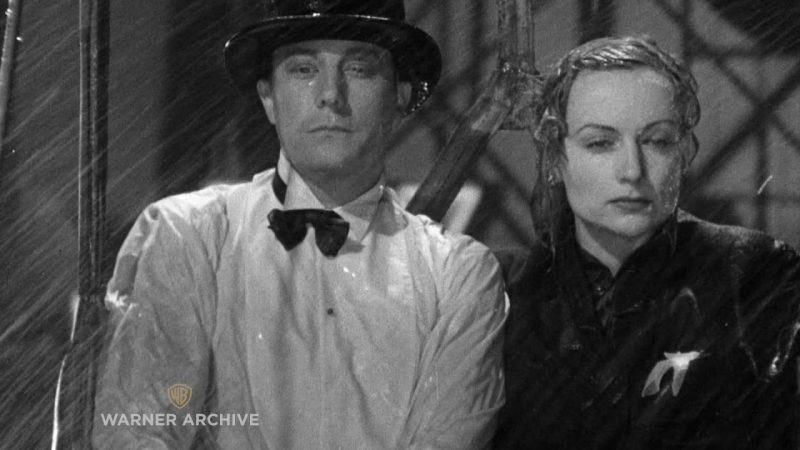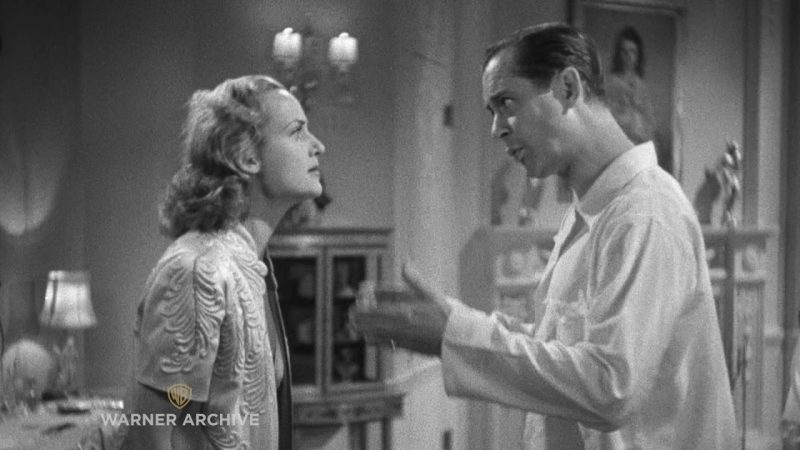Contents
In an uncharacteristic comedic turn, the Master of Suspense brings us romantic fluff for our cinematic sweet tooth with Mr. and Mrs. Smith.
Mr. and Mrs. Smith (2005) became synonymous with Brad Pitt and Angelina Jolie and their highly-publicized affair that steamed up the pages of tabloids. The film itself sounded like it was plucked from Hitchcock’s filmography, following a pair of married assassins who were unwittingly hired to kill each other, but the director’s own Mr. and Mrs. Smith (1941) couldn’t be farther from this unrelated tale. Robert Montgomery and Carole Lombard are simply a bickering young couple who discover they are not really married, hardly a logical choice for a Hitchcock vehicle. Unfortunately, Hitchcock was forbidden to exercise as much freedom in this early collaboration with RKO studios. Despite these limitations, the sparkling chemistry of the stars and the shining bits of dialogue throughout the film help Mr. and Mrs. Smith transcend the predictability of the plot.
The Golden Rules of Marriage
Hitchcock teaches us that where the ordinary is expected, the extraordinary always lurks beneath the surface. Broken-legged Jimmy Stewart discovered murder during a mundane stretch of spying on the neighbors in Rear Window. The all-American Newton family welcomes home their beloved Uncle Charlie – who just happens to be a murderer – in Shadow of a Doubt. Although less sinister, peculiarity arises with a vengeance at the beginning of Mr. and Mrs. Smith.

The camera pans over a bedroom littered with dirty dishes and soiled clothes and settles on a disheveled David Smith (Robert Montgomery) playing cards amid the mess, smoking a cigarette while Ann Smith (Carole Lombard) ignores him under the covers. We soon learn that they are mired in the consequences of their golden rule: a fighting couple must never emerge from the bedroom until they reconcile. On day three, a weary David caves and cuddles with his relenting wife. Their marriage is full of rules orchestrated by Ann to improve the strength of their marriage, but mostly to remain assured of her husband’s undying devotion.
The Rulebreaker
Early on in the film, David beseechingly refers to Ann as his “little girl,” which is exactly how he treats her and exactly how Lombard plays the role of Ann Smith. David is willing to play along with his wife’s games because he truly loves her and knows she needs constant reassurance, but he can’t resist the urge to poke fun at his wife’s childish tendencies. The perfect opportunity arises when he learns their marriage might not be valid. Knowing how his wife faltered when he earlier admitted he would’ve preferred to remain a bachelor, David plays the joke to the hilt. Unfortunately for him, Ann proves she can live without him and the panicked David must try to win back his wife.
Montgomery and Lombard as Mr. and Mrs. Smith
Montgomery is devilishly funny as David. He is likable from his first moments onscreen as the naughty, but tender-hearted husband. As he learns that his marriage license is invalid, his dignified exterior melts away and it’s delightful to watch the wheels turn behind the glint in his eyes and his boyish laugh as he plots his joke against his wife.
Carole Lombard deftly portrays Ann like a temperamental child playing house with an impish childhood friend. Her performance is rife with innocent looks and sweet smiles offset by scowls and tantrums. She professes everlasting love and undying hatred with equal passion to her scheming husband.
Romance with a Hitch
Like the conventional plots of current Hollywood fare, boy-meets-girl romances were popular among the scores of romantic comedies during the ’30s and ‘40s. Fred Astaire was always in hot pursuit of Ginger Rogers, while Clark Gable feigned disinterest in Claudette Colbert in It Happened One Night. Audiences, however, also enjoyed the onscreen banter of married couples like the Thin Man’s Nick and Nora Charles, so Mr. and Mrs. Smith was an ideal choice for screwball queen Carole Lombard’s next film in 1941, but not so ideal for a Master of Suspense.
Although most of his thrillers – and his own personality – were infused with bouts of dark humor, Hitchcock initially resisted the lighter Mr. and Mrs. Smith. The plot seemed too familiar, and RKO refused to let a director so drawn to thrills and chills tinker with the light-hearted script. RKO only pursued the Master of Suspense because studio darling Carole Lombard insisted that her friend direct the film. Because of his fondness for Lombard – who joined the rank of famous Hitchcock blondes – they agreed to direct the comedy with few changes to the original script if it meant securing projects more tailored to his sensibilities in the near future.
Overall, Mr. and Mrs. Smith is a cute film that ultimately suffers from being attached to Hitchcock’s more significant body of work. It is by no means a masterpiece, but a worthwhile piece of cinematic history if only for offering the pairing of Montgomery and Lombard and the uncharacteristically comedic whim from the Master of Suspense.


Be First to Comment